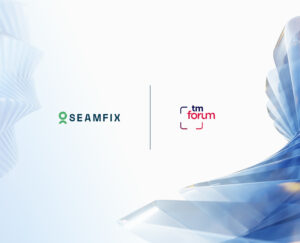Let’s talk about security for a second. We all want our online accounts to be safe, but let’s be honest—traditional login methods can feel like a hassle. Enter risk-based authentication (RBA), a smarter, more dynamic way to keep your accounts secure without driving you crazy. It’s like having a security guard who’s always on duty, but instead of checking everyone the same way, it adjusts based on the situation. Cool, right?
In this article, we’ll break down what risk-based authentication is, how it works, and why it’s such a big deal. Plus, we’ll show you how Seamfix iAM incorporates this smart approach to keep your accounts safe. Let’s dive in!
What is Risk-Based Authentication?
Risk-based authentication (RBA) is a security method that evaluates the risk of a login attempt in real-time. Instead of treating every login the same way (like asking for a password every single time), RBA looks at factors like who is logging in, where they’re logging in from, and how they’re logging in. Based on this information, it decides whether to let the user in, ask for extra verification, or block the attempt altogether.
Think of it like this: If you’re logging in from your usual device at home, RBA might let you in without a fuss. But if someone tries to log in from a strange location or device, RBA will raise an eyebrow and ask for more proof that it’s really you.
How Does Risk-Based Authentication Work?
Okay, so how does RBA actually work? Let’s break it down step by step:
- The Login Attempt Happens: Someone tries to log into an account.
- RBA Analyzes the Context: The system looks at a bunch of factors to assess the risk, such as:
- Location: Is the login coming from a familiar place or a new country?
- Device: Is it a trusted device or one that’s never been used before?
- Behavior: Is the user typing at their usual speed, or does something seem off?
- Time of Day: Is it a normal time for the user to log in, or is it 3 a.m.?
- RBA Assigns a Risk Score: Based on the analysis, the system gives the login attempt a risk score—low, medium, or high.
- The System Responds:
- Low Risk: The user is logged in without any extra steps.
- Medium Risk: The system might ask for an additional verification step, like a one-time code or a fingerprint scan.
- High Risk: The system blocks the login attempt and alerts the account owner.
This whole process happens in seconds, so it doesn’t slow you down—but it adds a powerful layer of security.
Why Does Risk-Based Authentication Matter?
Here’s why RBA is such a big deal:
1. It’s Smart and Adaptive
RBA doesn’t treat all logins the same. It adapts to the situation, which means it’s both more secure and less annoying. You won’t be bombarded with extra steps unless there’s a real reason to be suspicious.
2. It Stops Hackers in Their Tracks
Hackers often try to log in from unusual locations or devices. RBA spots these red flags and blocks them before they can do any damage.
3. It Improves User Experience
Nobody likes jumping through hoops to log in. With RBA, you only face extra steps when there’s a genuine risk, so your login experience stays smooth and hassle-free.
4. It’s Scalable
Whether you’re a small business or a global enterprise, RBA can scale to meet your needs. It’s perfect for organizations that want to balance security and convenience.
Real-Life Examples of RBA in Action
Still not sure how RBA works in the real world? Here are some examples:
- Banking Apps: If you log in from your usual phone, the app might let you in right away. But if someone tries to log in from a new device or location, the app will ask for extra verification, like a one-time code.
- Email Services: If you log in from a coffee shop in another city, your email provider might ask you to confirm your identity with a text message or security question.
- Seamfix iAM: With Seamfix iAM’s risk-based authentication, your accounts are protected by a system that constantly evaluates login attempts for potential risks. Whether it’s an unusual location or a suspicious device, Seamfix iAM ensures your data stays secure without compromising on user experience.
The Pros and Cons of Risk-Based Authentication
Like any technology, RBA has its upsides and downsides. Let’s break it down:
Pros
- Enhanced Security: RBA adds an extra layer of protection by identifying and blocking suspicious login attempts.
- User-Friendly: It only asks for extra verification when necessary, so it doesn’t disrupt your workflow.
- Real-Time Protection: RBA works in real-time, so it can respond to threats as they happen.
- Scalable: It works for businesses of all sizes, from startups to large enterprises.
Cons
- False Positives: Sometimes, RBA might flag a legitimate login as risky (like if you’re traveling and logging in from a new location).
- Complex Setup: Implementing RBA can be more complicated than traditional authentication methods, but the benefits far outweigh the effort.
How to Get Started with Risk-Based Authentication
Ready to take your security to the next level? Here’s how to get started with RBA:
- Choose the Right Solution: Look for a platform that supports risk-based authentication, like Seamfix iAM. Seamfix iAM’s RBA feature is designed to be both powerful and user-friendly, making it a great choice for businesses of all sizes.
- Integrate with Your Systems: Connect RBA to your existing apps and services. Seamfix iAM makes this process seamless, so you can start protecting your accounts right away.
- Train Your Users: Let your team or customers know how RBA works and why it’s important. This helps reduce confusion and ensures everyone is on board.
- Monitor and Adjust: Keep an eye on how RBA is performing and make adjustments as needed. Over time, the system will learn and improve, making it even more effective.
Why Choose Seamfix iAM for Risk-Based Authentication?
If you’re looking for a reliable and user-friendly RBA solution, Seamfix iAM is a fantastic choice. Here’s why:
- Smart and Adaptive: Seamfix iAM’s RBA feature evaluates login attempts in real-time, ensuring your accounts are protected without unnecessary hassle.
- Easy Integration: Seamfix iAM integrates seamlessly with your existing systems, so you can start using RBA right away.
- User-Friendly: The intuitive design ensures a smooth experience for both administrators and end-users.
- Scalable: Whether you’re a small business or a large enterprise, Seamfix iAM grows with you, providing a scalable solution for all your authentication needs.
Final Thoughts
Risk-based authentication is like having a security guard who’s always on duty, but way smarter. It adapts to the situation, stops hackers in their tracks, and keeps your accounts safe without making your life harder. And with solutions like Seamfix iAM, implementing RBA has never been easier.
So, if you’re ready to take your security to the next level, it’s time to give risk-based authentication a try. Trust us, your future self (and your accounts) will thank you.
Got questions about RBA or Seamfix iAM? Drop them in the comments—we’d love to help!






